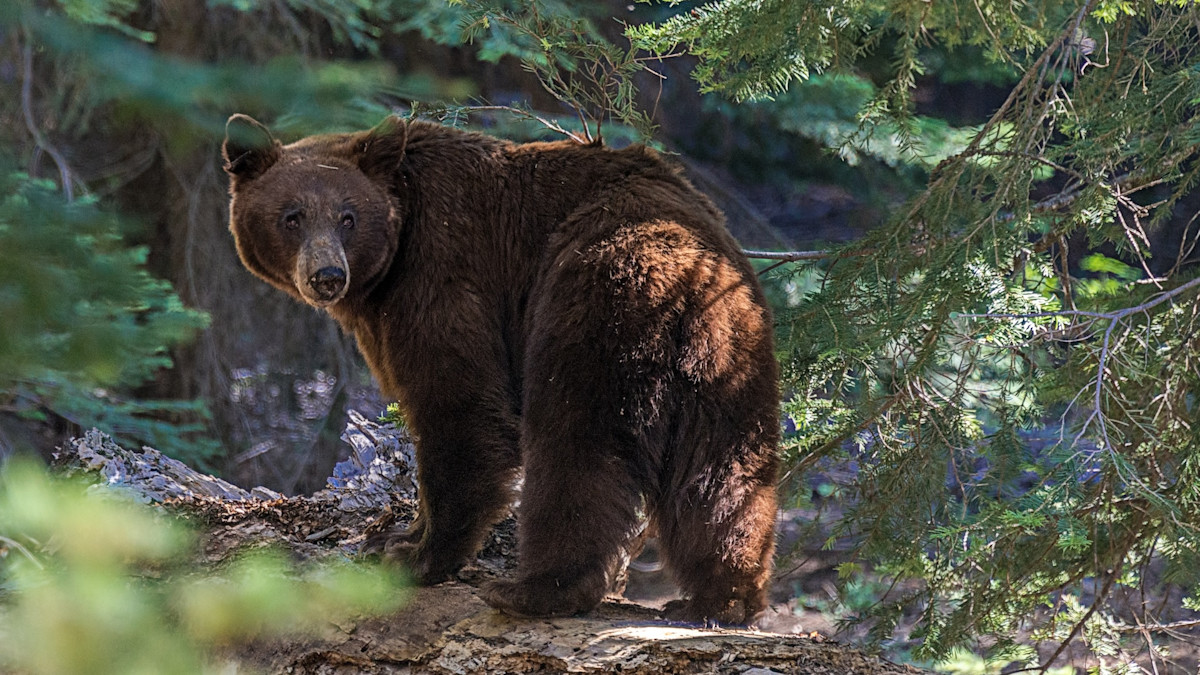
A body found in a home in November 2023 has recently led to the California Department of Fish and Wildlife (CDFW) confirming the state’s first-ever documented fatal black bear attack. It was initially believed that the black bear was feeding on the victim’s remains in her home; however, an autopsy revealed that the victim had died from injuries sustained during the attack, specifically from a laceration to the neck area, Sierra County Sheriff Mike Fisher told KCRA3.
“Upon showing up, immediately saw evidence of bear intrusion into the house,” Fisher said. “The door was broken. There was bear scat on the porch. It appeared that the bear had probably been there several days and had been feeding on the remains.”
The incident has highlighted weaknesses in the state’s bureaucratic process of wildlife management, raised questions about how local officials and wildlife experts approach managing the bear populations in the state, and pointed out potential flaws in the laws surrounding bear and human encounters within the state.
After seventy-one-year-old Patrice Miller was discovered dead in her Downieville home last fall with evidence of a bear attack, the Sierra County Sheriff’s Office sought a depredation permit, which is official permission from the CDFW to trap and euthanize a bear. The process got a bit messy when the CDFW initially denied the permit, citing that it would have to be requested by the house’s resident, who had already died.
The permit was eventually issued, and a subcontracted trapper had a bear in a trap within two days. This was followed by an initial misidentification of the bear’s sex by a CDFW wildlife biologist and a resulting disagreement between CDFW and local authorities, which ultimately ended with the bear being tranquilized, identified as male, and euthanized. DNA comparison later confirmed the euthanized bear was indeed the same bear responsible for killing Miller in her home, according to Sheriff Fisher via the Mountain Messenger.
Black bear management was not always a hotly contested issue in California, but a 2022 policy change created what Sherrif Fisher sees as an unnecessary hurdle for local law enforcement. Prior to the change, game wardens could make real-time decisions about issuing permits, when necessary, but that decision now requires a review process involving CDFW biologists.
As a result, the number of black bears killed via depredation permits is drastically down, according to the state’s Black Bear Conservation Plan, while across Sierra County, incidents of unwanted human/bear encounters have increased. One black bear muscled its way into multiple residences, several with people inside, before being shot while attempting to break into the Downieville School gymnasium with children inside. Meanwhile, another bear broke into the same house three times, all while a depredation permit had been requested, but CDFW had not taken action. Local officials in the county are monitoring additional bears, at least one of which has broken into unoccupied dwellings but has not been deemed to be a public threat.
The bear issue has not been contained to California’s Sierra County. In other areas across the state, such as in Lake Tahoe and the Sierra Nevada, reports of black bears breaking into homes and cars in search of food have also increased. One nonprofit organization called Bear League has begun supplying electrified doormats to homeowners in an attempt to deter bear break-ins.
The Golden State is currently home to approximately 30,000 to 40,000 black bears, which has risen significantly in the past three decades when the population was estimated between 10,000 and 15,000 bears in the 1980s.
Despite rising population numbers, the fatal bear attack was an anomaly, officials said. Most bears will not approach humans, but the CDFW emphasizes that proper food storage and bear deterrents are crucial to minimizing any human/bear interactions. Additionally, officials suggest making loud noises, such as banging together pots and pans, using an air horn, or blasting loud music to discourage bears from spending time in human-occupied areas. Carrying bear spray is an option, although, in certain areas of California, such as Yosemite and Sequoia National Parks, bear spray is not permitted.







Conversation